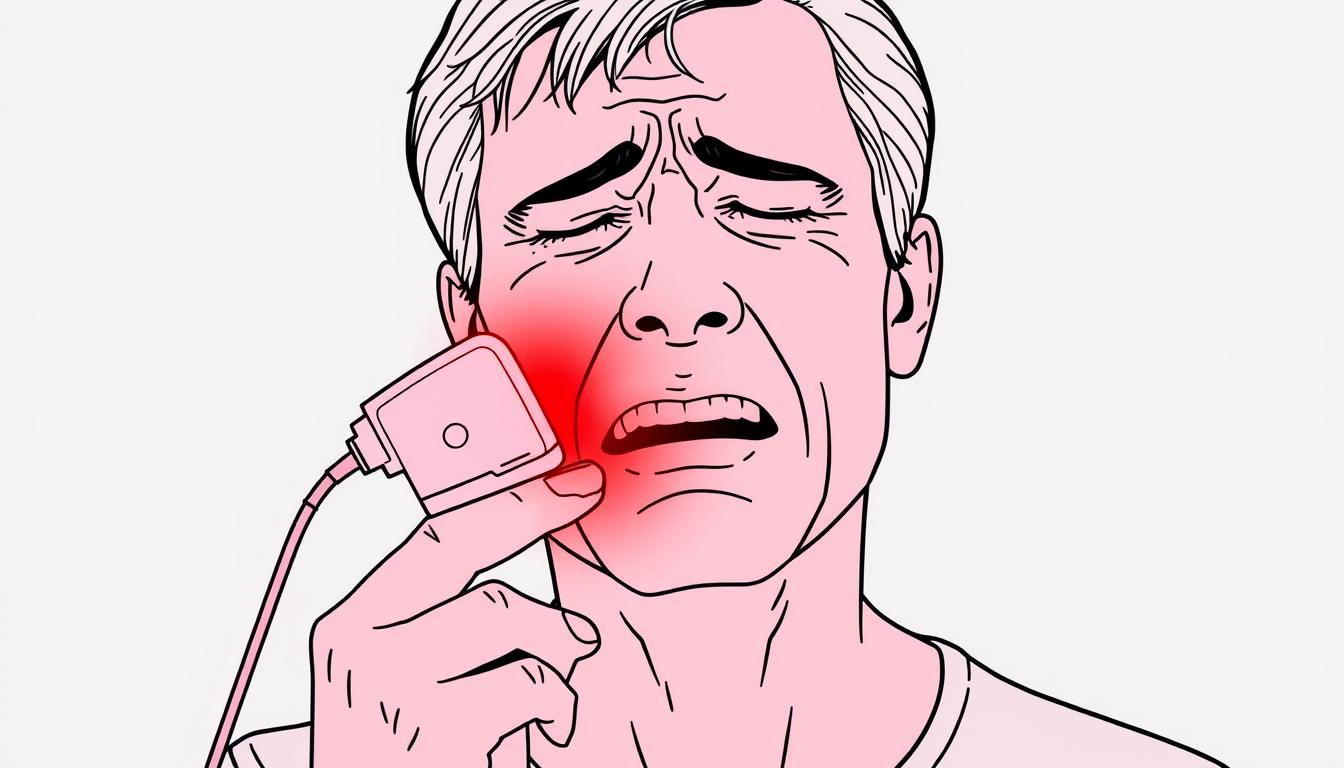Temporomandibular joint (TMJ) disorders affect approximately 5-12% of the population, causing pain, clicking sounds, and limited jaw movement that can significantly impact quality of life. For those seeking non-invasive relief options, red light therapy has emerged as a promising treatment approach backed by growing clinical evidence.
This therapy, also known as photobiomodulation or low-level light therapy, uses specific wavelengths of red and near-infrared light to penetrate tissue, reduce inflammation, and promote healing at the cellular level. But how effective is it specifically for TMJ disorders, and what options are available for home treatment?
Understanding TMJ Disorders and Their Impact
The temporomandibular joint connects your jawbone to your skull, functioning as a sliding hinge that enables talking, chewing, and yawning. When this complex joint or its surrounding muscles become inflamed or damaged, it results in temporomandibular disorders (TMD).
Common symptoms include:
- Pain or tenderness in the jaw, face, neck, or shoulders
- Clicking, popping, or grating sounds when opening or closing the mouth
- Limited jaw movement or locking
- Facial muscle fatigue
- Headaches and earaches
Conventional treatments typically include pain medications, oral splints, physical therapy, and in severe cases, surgical interventions. However, many patients seek non-invasive alternatives with fewer side effects, which has led to increased interest in light-based therapies.

The Science Behind Red Light Therapy for TMJ
Red light therapy works through a process called photobiomodulation, where specific wavelengths of light (typically 630-660nm red light and 810-850nm near-infrared light) penetrate the skin and are absorbed by mitochondria, the energy-producing components of cells.
This absorption triggers several beneficial effects that can help alleviate TMJ symptoms:
Cellular Effects
- Increased ATP (cellular energy) production
- Enhanced cellular metabolism
- Stimulation of collagen production
- Improved tissue oxygenation
Therapeutic Benefits
- Reduced inflammation in joint tissues
- Decreased muscle tension and spasm
- Improved blood circulation
- Pain relief through nerve signal modulation
The depth of light penetration is crucial for treating TMJ disorders. Near-infrared wavelengths (800-850nm) penetrate deeper into tissue than red wavelengths (630-660nm), reaching the joint structures more effectively. However, a combination of both wavelengths often provides the most comprehensive benefits.
Clinical Evidence Supporting Red Light Therapy for TMJ
Several well-designed clinical studies have demonstrated the effectiveness of red light therapy for TMJ disorders:
Key Research Findings
- Ahrari et al. (2014) conducted a randomized controlled trial showing that low-level laser therapy significantly reduced pain and improved mouth opening in TMD patients compared to placebo treatment.
- Marini et al. (2010) found that patients receiving red light therapy experienced a 40.6% reduction in pain intensity and significant improvement in mandibular movement after 10 treatment sessions.
- Al-Quisi et al. (2019) demonstrated in a double-blind randomized controlled trial that LED red light therapy effectively reduced pain and trigger points in TMD patients.
A systematic review by Xu et al. (2018) analyzed 31 studies and concluded that photobiomodulation therapy shows “moderate to strong evidence” for reducing pain and improving function in TMJ disorders, particularly those with myofascial pain components.
These findings are encouraging for TMJ sufferers seeking non-pharmaceutical pain management options, though researchers note that treatment protocols (wavelength, power density, treatment duration) vary across studies.
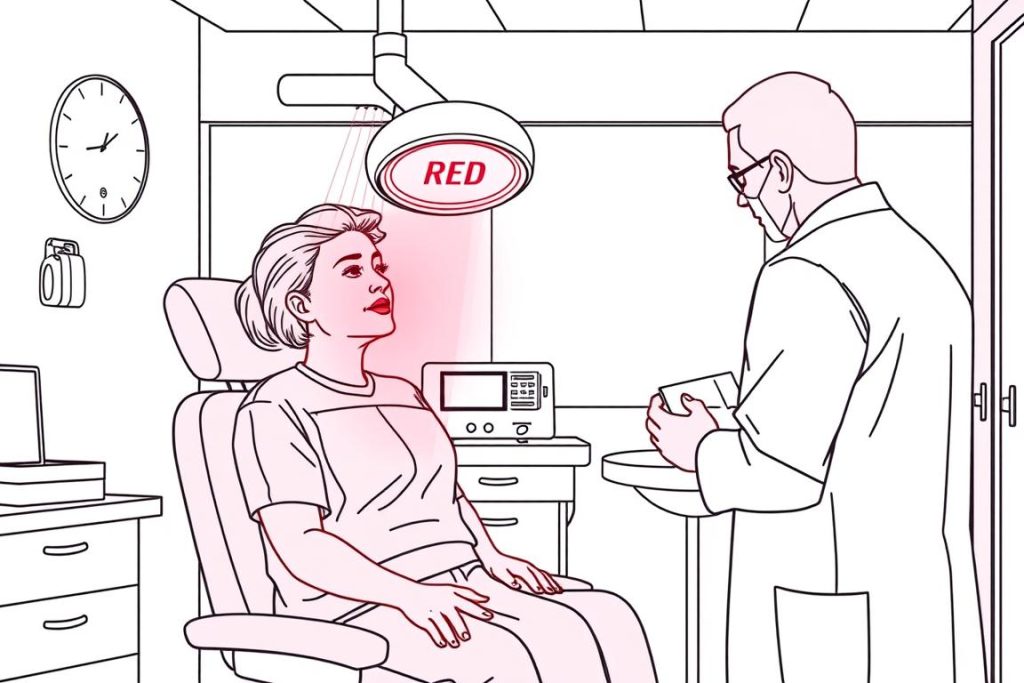
Red Light Therapy Devices for Home Treatment
The growing evidence for red light therapy’s effectiveness has led to increased availability of home-use devices. These range from handheld units to larger panels, with varying specifications and features.
Key Factors to Consider When Choosing a Device
Wavelength
Look for devices offering both red (630-660nm) and near-infrared (810-850nm) wavelengths for optimal TMJ treatment. Multiple wavelengths provide comprehensive benefits for both surface and deeper tissues.
Power Output
Higher power density (measured in mW/cm²) delivers more energy to tissues. Effective devices typically deliver 30-100 mW/cm² at the treatment surface for adequate therapeutic effect.
Treatment Area
For TMJ specifically, smaller targeted devices may be sufficient, though larger panels offer versatility for treating other conditions simultaneously.
For targeted TMJ treatment, smaller panels like the Total Spectrum Mini work well, offering precise application to the jaw area with its compact 12 × 12 inch size and 72 LEDs. The device’s seven-wavelength technology includes the clinically validated 660nm and 850nm wavelengths most beneficial for TMJ pain relief. Compare leading panels side-by-side here to find the optimal configuration for your needs.
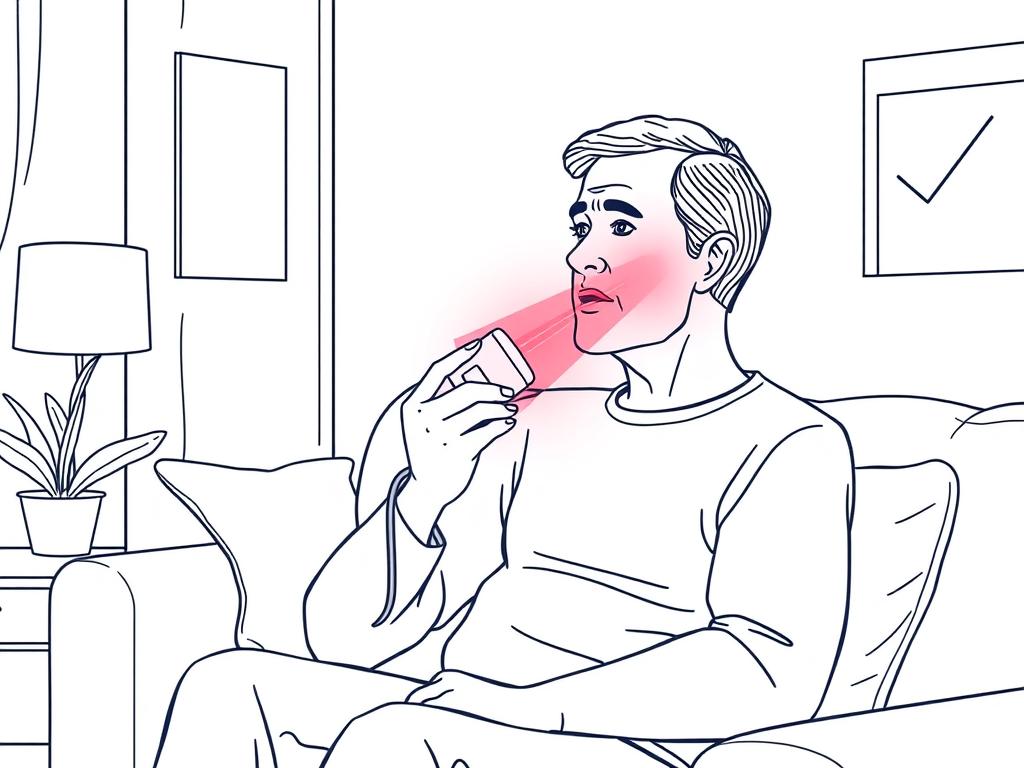
Leading Brands and Their Strengths
PlatinumLED
Known for their modular setups that allow customized treatment configurations. Their BioMax series offers five wavelengths and good power output, though at a premium price point.
Mito Red Light
Features a user-friendly mobile app for treatment tracking and offers good value with their MitoPRO series. Their devices typically include 2-3 wavelengths.
Joovv
Popular for their athlete partnerships and modular design. Their devices feature good build quality but tend to be among the most expensive options.
For those seeking comprehensive treatment beyond just TMJ relief, larger setups like the Total Spectrum Ultra provide full-body coverage with its 64 × 12 inch panel and 480 LEDs. The motorized stand with programmable height presets makes it convenient for consistent treatment sessions.
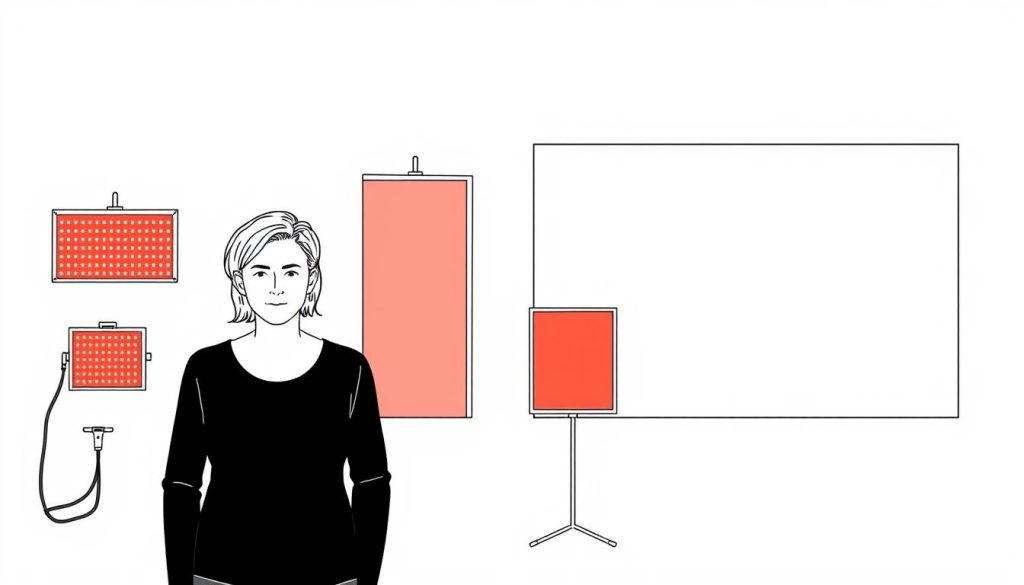
Effective Treatment Protocols for TMJ
Based on clinical research and practitioner recommendations, the following protocols can help maximize the benefits of red light therapy for TMJ disorders:
Recommended Protocol
- Treatment Duration: 3-5 minutes per treatment area
- Distance from Device: 6-12 inches (follow manufacturer guidelines)
- Frequency: Daily for acute pain; 3-4 times weekly for maintenance
- Course Length: Minimum 4-6 weeks for noticeable improvement
- Target Areas: TMJ joint, masseter muscle, temporalis muscle, and surrounding tissues
For optimal results, treat both sides of the face even if pain is primarily on one side. This helps balance muscle tension and joint function. Many users report immediate relief after sessions, though lasting improvements typically require consistent treatment over several weeks.
“Consistency is key with photobiomodulation therapy. The cellular effects build over time, leading to cumulative benefits with regular use.”
The advantage of home devices is the ability to maintain a consistent treatment schedule without the cost and inconvenience of clinical visits. However, it’s advisable to consult with a healthcare provider before beginning any new treatment regimen, especially if you have severe TMJ dysfunction.
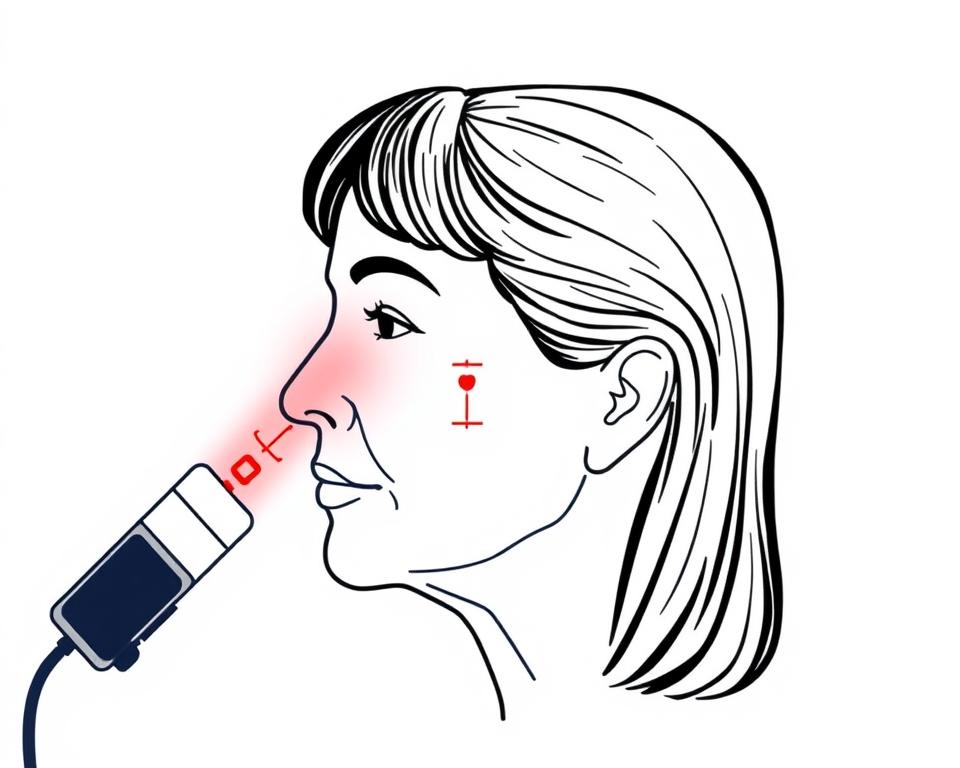
Additional Benefits Beyond TMJ Relief
While targeting TMJ pain, red light therapy offers several complementary benefits that may enhance overall treatment outcomes:
Physical Benefits
- Reduced Headaches: Many TMJ sufferers experience tension headaches that may improve with treatment
- Improved Sleep: Pain reduction often leads to better sleep quality
- Enhanced Skin Health: Red light therapy stimulates collagen production, improving skin appearance in the treated areas
Practical Advantages
- Non-Invasive: No needles, injections, or surgical procedures
- Drug-Free: Avoids potential side effects of pain medications
- Complementary: Can be used alongside other treatments like physical therapy or dental splints
The versatility of red light therapy devices means they can be used for multiple health conditions beyond TMJ, including muscle recovery, skin rejuvenation, and general pain management. This makes them a valuable wellness investment for many households.
Technical Considerations for Optimal Results
Beyond basic protocols, several technical factors can influence treatment effectiveness:
Wavelength Combinations
Research indicates that devices offering multiple wavelengths may provide more comprehensive benefits. The Total Spectrum series from RLT Home features seven human-validated wavelengths (630/633nm, 660nm, 808/810nm, 830nm, 850nm, 1064nm, plus 465nm blue), covering the full therapeutic spectrum for TMJ and related conditions.
EMF and Flicker Considerations
Some users are concerned about electromagnetic field (EMF) exposure and light flicker from therapy devices. Quality manufacturers address these issues through proper shielding and stable power delivery. RLT Home devices feature zero measurable EMF at ≥10 cm and less than 1% flicker, making them suitable for sensitive individuals.
Pre-Programmed Modes
For those new to red light therapy, devices with pre-set treatment programs simplify the experience. Look for options with specific modes for pain and inflammation that optimize wavelengths and pulsing patterns for TMJ relief.
Pro Tip: Clean the treatment area before sessions to remove makeup, skincare products, or oils that might block light penetration. This ensures maximum therapeutic effect reaching the deeper tissues of the TMJ.
Integrating Red Light Therapy with Other TMJ Treatments
Red light therapy works well as part of a comprehensive approach to TMJ management. Consider these complementary strategies:
Physical Therapy
Gentle jaw exercises and stretches can improve mobility and reduce muscle tension. Using red light therapy before exercises may enhance their effectiveness by relaxing tissues.
Stress Management
Since stress often exacerbates TMJ symptoms through teeth clenching and jaw tension, practices like meditation, deep breathing, or yoga can be valuable additions to your treatment plan.
Dietary Modifications
Avoiding hard, chewy foods and implementing an anti-inflammatory diet may complement the inflammation-reducing effects of red light therapy.
Many users report enhanced results when combining these approaches with consistent red light therapy sessions. The synergistic effects can address multiple aspects of TMJ dysfunction simultaneously.
Real User Experiences with Red Light Therapy for TMJ
While clinical studies provide important evidence, real-world user experiences offer valuable insights into what to expect from red light therapy for TMJ:
How quickly do users typically notice improvement?
Many users report some immediate relief after the first few sessions, particularly reduced pain and improved jaw mobility. However, lasting improvements typically develop over 2-4 weeks of consistent use. Those with chronic, severe TMJ issues may require longer treatment courses before experiencing significant benefits.
What unexpected benefits do users report?
Beyond TMJ relief, users frequently mention improved skin tone and texture in the treated areas, reduced tension headaches, better sleep quality, and decreased ear pain or ringing that sometimes accompanies TMJ disorders.
Are there any common challenges or limitations?
The most common challenge is maintaining consistency with treatment sessions. Some users also note that while pain relief can be significant, structural issues like disc displacement may still require additional interventions. Finding the optimal device positioning for reaching the TMJ joint can take some experimentation.
When selecting a device, consider factors like warranty coverage and return policies. RLT Home offers a 60-day risk-free trial period, allowing you to evaluate effectiveness for your specific condition before committing fully.
Cost Considerations and Value Assessment
When evaluating the investment in red light therapy for TMJ, consider these financial aspects:
Initial Investment
Quality red light therapy devices range from $200 for small targeted units to $2,000+ for comprehensive panels. While this represents a significant upfront cost, it should be weighed against long-term alternatives.
Long-Term Value
Compare the one-time device purchase against ongoing costs of professional treatments, which typically range from $75-150 per session and may require 8-12 sessions for initial results, plus maintenance visits.
For those seeking the most cost-effective approach to TMJ treatment, smaller targeted devices provide good value while still delivering therapeutic benefits. The versatility of using the device for multiple health conditions further enhances its value proposition.
Many users find that their red light therapy device pays for itself within 6-12 months when compared to the costs of professional treatments, pain medications, and other interventions for TMJ and related conditions.
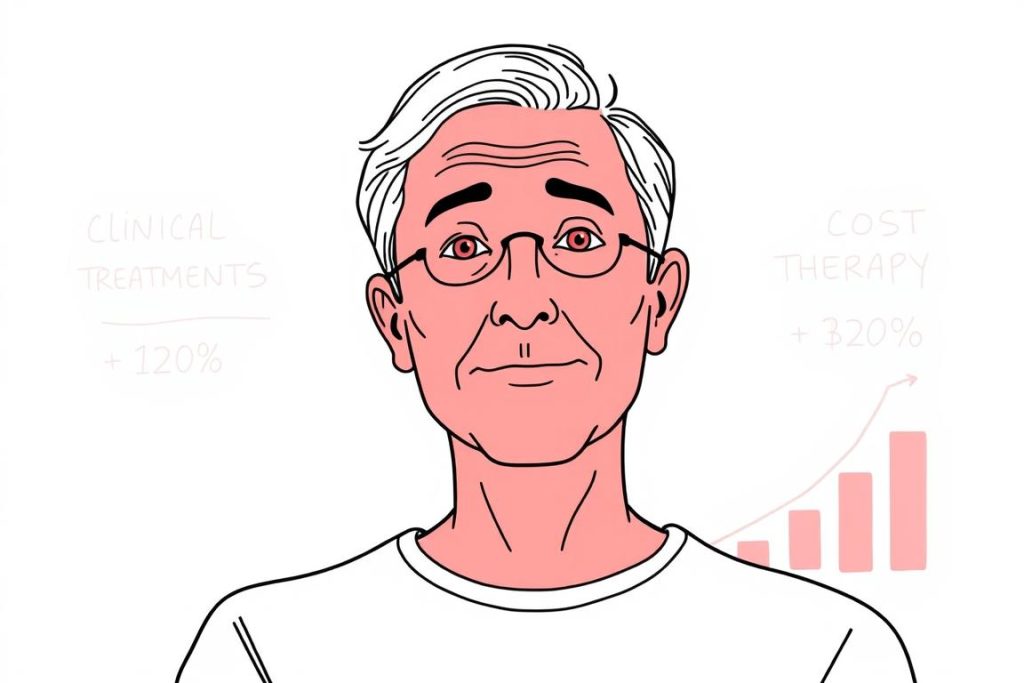
Conclusion: Is Red Light Therapy Right for Your TMJ?
The growing body of clinical evidence supports red light therapy as a valuable tool for managing TMJ disorders, particularly for reducing pain, inflammation, and improving jaw mobility. Its non-invasive nature and minimal side effect profile make it an attractive option for many sufferers.
When selecting a device, prioritize those offering both red and near-infrared wavelengths, adequate power output, and quality construction. The Total Spectrum series provides comprehensive wavelength coverage with features like zero EMF and pre-programmed treatment modes that simplify the user experience. Compare leading panels side-by-side here to find the best match for your specific needs.
Remember that consistency is key to achieving optimal results. While some relief may be experienced quickly, a committed approach over several weeks typically yields the most significant improvements. Consider integrating red light therapy into a comprehensive TMJ management plan that may include physical therapy, stress reduction, and appropriate lifestyle modifications.
As with any health intervention, consult with your healthcare provider before beginning treatment, especially if you have severe TMJ dysfunction or other underlying health conditions.
— David, independent RLT researcher

